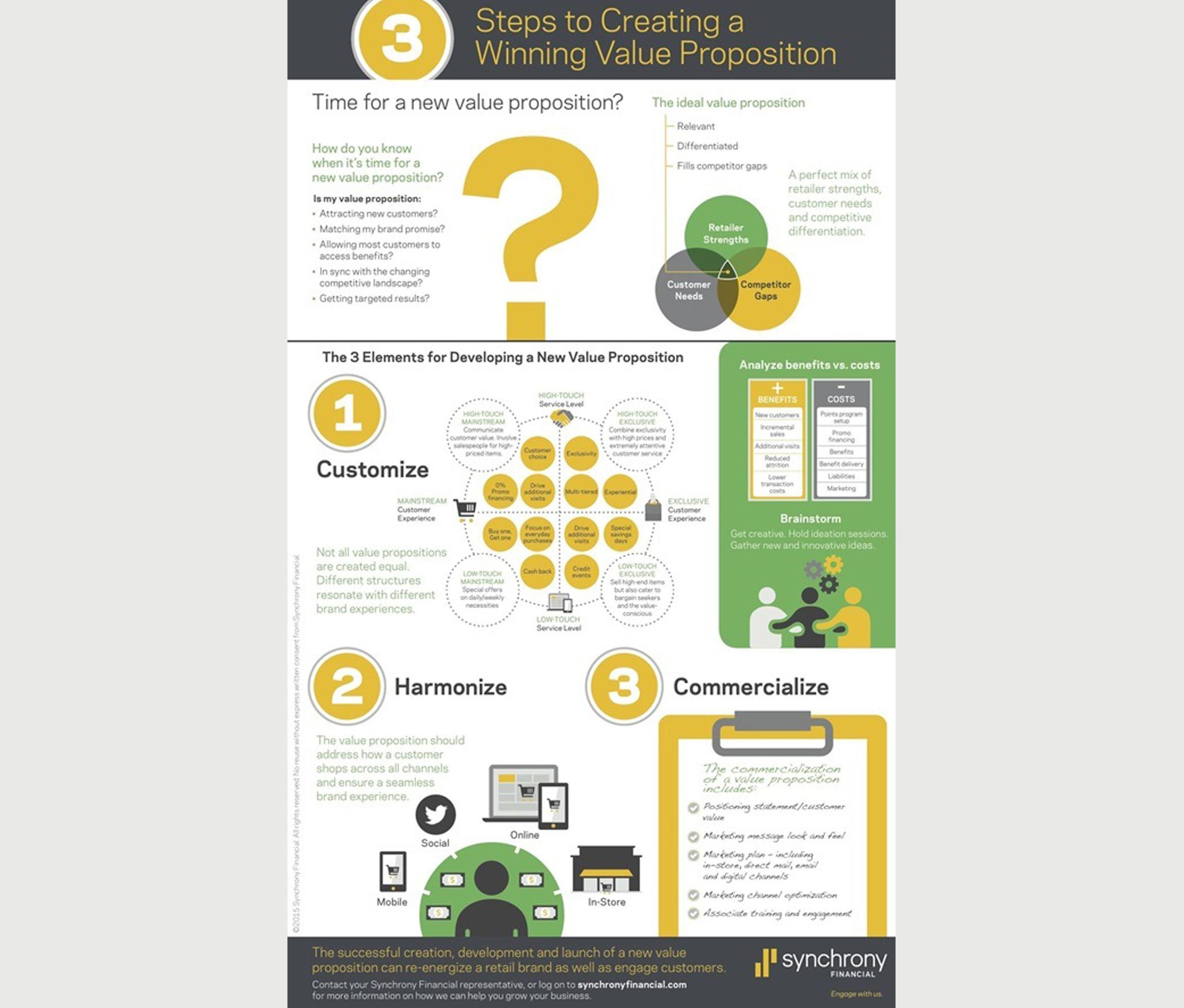White Paper
June 17, 2015, 5:20 PM EDT
Here's One Way Retailers Can Grow Customer Loyalty
Author
Source: Business Insider
Abstract:
As a retailer, you're always thinking of ways to make your customers happy and deepen the relationship between them and your brand. However, it can be easy to overlook the one thing that matters most: your value proposition.
You probably already define what your business offers — and how that's different, or better, than what your competitors do. But is it unique and compelling enough?
Crafting a strong value proposition takes a lot of time, effort, and creativity, but it makes a huge difference to customers.
Synchrony Financial, a leader in consumer financing and the largest issuer of private label credit cards in the US (based on purchase volume and receivables), has done extensive research into how value propositions drive customer loyalty. Its findings are consolidated in an infographic (embedded below) that outlines three steps every retailer should consider taking.
You probably already define what your business offers — and how that's different, or better, than what your competitors do. But is it unique and compelling enough?
Crafting a strong value proposition takes a lot of time, effort, and creativity, but it makes a huge difference to customers.
Synchrony Financial, a leader in consumer financing and the largest issuer of private label credit cards in the US (based on purchase volume and receivables), has done extensive research into how value propositions drive customer loyalty. Its findings are consolidated in an infographic (embedded below) that outlines three steps every retailer should consider taking.
Table of Contents
1. Customize.
The mantra "know your customer" has never been more important, so your value proposition needs to address your customers' wants, needs, and lifestyles. That's why airlines offer membership-based perks like lounges to help ease the pain of travel, while some brands reward their top shoppers.
It starts with research. Synchrony Financial suggests beginning by analyzing any data you already have on your customers to understand various shopper profiles and segments. Leverage focus groups and collect insights from employees who interact directly with customers. It's important to give the same level of attention to your competitors — especially their strengths and weaknesses — so you can set yourself apart.
According to Toni White, Synchrony Financial's chief marketing officer, a value proposition is all about strengthening the relationship with your customers.
"It's an ongoing opportunity for retailers to build a stronger connection with their customers and create a positive perception of their brand," says White. "Those who spend time going through the process of developing a strong value proposition are more successful in attracting new customers and maintaining loyalty with their existing ones."
2. Integrate.
We're long past the days when visiting a physical store location was the only way to make purchases. Customers expect the same shopping experience across all retail platforms, in person and online.
That means if you're buying a pair of shoes, you should be able to get them in the color you want, at the same price — whether you're on the website, using the app, or shopping in the store. In fact, many retailers are letting people buy online inventory at the store, and then shipping the items to them for free.
Rewards and discounts need to be consistent with your value proposition, too. If you have a loyalty program that allows customers to earn points when they shop online or on a mobile app, then make sure they can track and redeem their points at any time, on any type of device.
3. Commercialize.
You may need to pilot a few different value propositions to see which one resonates with your customers and makes sense for your business objectives.
Once you have a clear-cut winner, then be ready to put key resources into supporting it. Check off these items from Synchrony Financial's infographic: Create a positioning statement, a marketing message, and a marketing plan (for example, in store, direct mail, email, and digital channels). You'll also need to train your employees and associates.
Ultimately, customers want to know, "What's in it for me?" A great value proposition tells them just that — but creating one doesn't happen overnight. And even though it's a lot of work, you'll be surprised by how much it can help grow your business.



